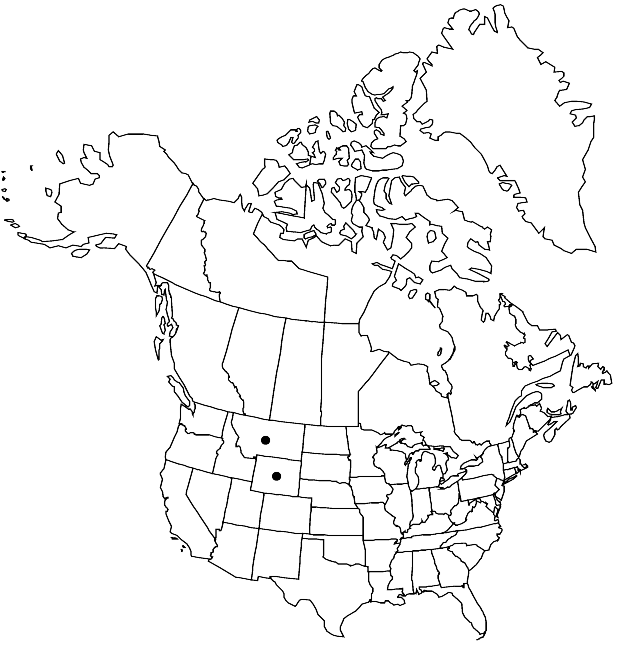Difference between revisions of "Physaria curvipes"
Novon 17: 183. 2007.
FNA>Volume Importer |
imported>Volume Importer |
||
| (6 intermediate revisions by 2 users not shown) | |||
| Line 8: | Line 8: | ||
}} | }} | ||
|common_names=Curved bladderpod | |common_names=Curved bladderpod | ||
| − | |basionyms={{Treatment/ID/ | + | |basionyms={{Treatment/ID/Basionym |
|name=Lesquerella curvipes | |name=Lesquerella curvipes | ||
|authority=A. Nelson | |authority=A. Nelson | ||
| + | |rank=species | ||
| + | |publication_title=Bull. Torrey Bot. Club | ||
| + | |publication_place=25: 205. 1898 | ||
}} | }} | ||
|synonyms= | |synonyms= | ||
| Line 27: | Line 30: | ||
|elevation=1600-2800 m | |elevation=1600-2800 m | ||
|distribution=Mont.;Wyo. | |distribution=Mont.;Wyo. | ||
| − | |discussion=<p>Physaria curvipes is known from the Big Horn Mountains.</p> | + | |discussion=<p><i>Physaria curvipes</i> is known from the Big Horn Mountains.</p> |
|tables= | |tables= | ||
|references= | |references= | ||
| Line 36: | Line 39: | ||
-->{{#Taxon: | -->{{#Taxon: | ||
name=Physaria curvipes | name=Physaria curvipes | ||
| − | |||
|authority=(A. Nelson) Grady & O’Kane | |authority=(A. Nelson) Grady & O’Kane | ||
|rank=species | |rank=species | ||
| Line 51: | Line 53: | ||
|publication year=2007 | |publication year=2007 | ||
|special status= | |special status= | ||
| − | |source xml=https:// | + | |source xml=https://bitbucket.org/aafc-mbb/fna-data-curation/src/2e0870ddd59836b60bcf96646a41e87ea5a5943a/coarse_grained_fna_xml/V7/V7_1037.xml |
|tribe=Brassicaceae tribe Physarieae | |tribe=Brassicaceae tribe Physarieae | ||
|genus=Physaria | |genus=Physaria | ||
Latest revision as of 23:29, 5 November 2020
Perennials; caudex simple; densely pubescent, trichomes (often wavy, closely appressed to blade surfaces), 4–5-rayed, rays furcate or bifurcate, slightly fused near base, (tuberculate throughout). Stems simple from base, loosely spreading, usually decumbent, (well exserted from basal leaves, often reddish purple), 0.8–2.4 dm. Basal leaves: blade (erect), spatulate to nearly rhombic, 2.5–5(–9) cm, (base gradually narrowed to petiole), margins entire, (flat). Cauline leaves: blade spatulate, similar to basal, margins entire. Racemes loose, (elongated, exceeding basal leaves). Fruiting pedicels (ascending, curved or sigmoid), 4–7 mm. Flowers: sepals (pale yellow), lingulate to spatulate, 3.5–4 mm; petals narrowly oblanceolate, 4–6 mm. Fruits ellipsoid, not inflated (strongly latiseptate, more so at apex), (3–)5–9 mm; valves pubescent, trichomes closely appressed to surface; ovules 4–8 per ovary; style 2.5–4.5 mm (never more than 1/2 fruit length). Seeds plump.
Phenology: Flowering Jun–Jul.
Habitat: Limestone outcrops
Elevation: 1600-2800 m
Discussion
Physaria curvipes is known from the Big Horn Mountains.
Selected References
None.
